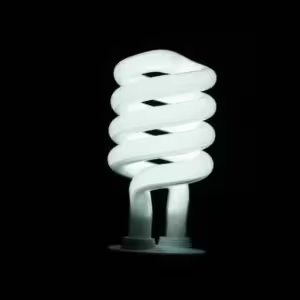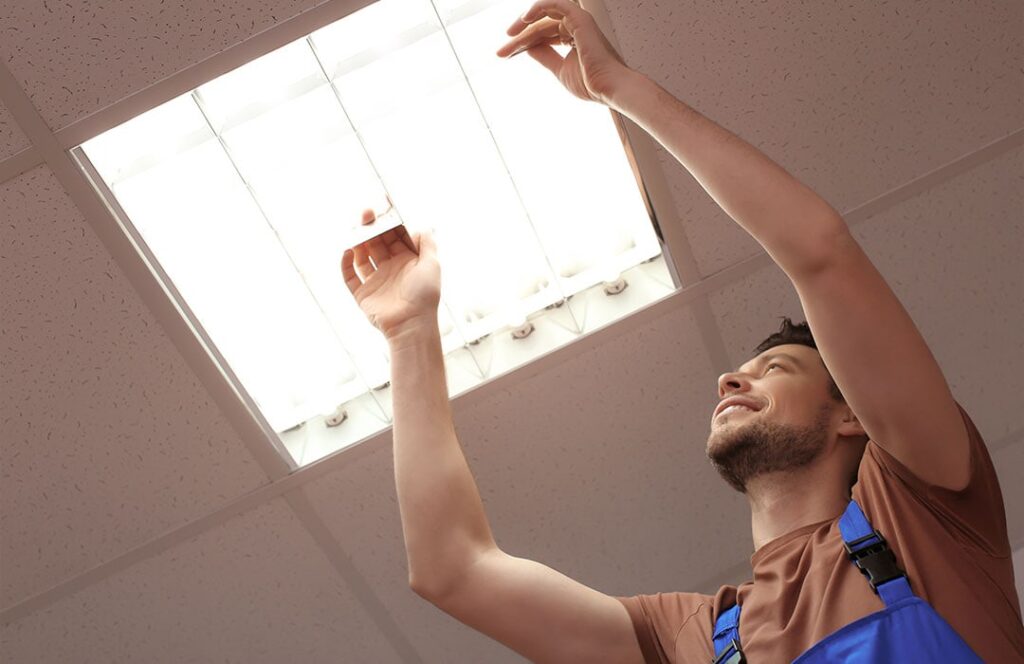Fluorescent Lights in Schools
The hidden dangers of Fluorescent Lights in Schools
Fluorescent lights in schools are a common sight due to their cost-effectiveness and the fact they have been around for many years. However, their use in educational settings can have several negative impacts on students and staff. Let’s explore the potential health and environmental risks associated with fluorescent lighting in schools and why it is time to consider alternatives.

Health Risks for Students and Staff
Mercury Exposure Fluorescent lights contain mercury, a toxic element that poses serious health risks if the bulbs break or are improperly disposed of. In a school environment, where accidents can happen, the risk of mercury exposure is a significant concern. Mercury can harm the nervous system, lungs, and kidneys, making it crucial to handle these bulbs with care.
Ultraviolet (UV) Radiation Fluorescent lights emit UV radiation, which can cause skin irritations and eye problems with prolonged exposure. Students and teachers who spend long hours under these lights are at risk of developing these issues. UV radiation can also worsen conditions like lupus and other autoimmune diseases.
Light Sensitivity and Migraines Many students and staff experience discomfort under fluorescent lights in schools, including eye strain, headaches, and migraines. The flickering of these lights, even if not visible to the naked eye, can trigger these symptoms. This is particularly problematic for individuals with light sensitivity or conditions like autism and epilepsy.
Impact on Learning and Productivity Studies have shown that fluorescent lighting can negatively affect mood and productivity. The harsh, unnatural light can increase mental and physical fatigue, reduce alertness, and contribute to feelings of anxiety and depression. In a school setting, this can hinder students’ ability to concentrate and perform well academically, and it can also affect teachers’ effectiveness.
Environmental Concerns
Mercury Pollution Improper disposal of fluorescent bulbs can lead to mercury contamination in landfills, which can then seep into the soil and water, affecting wildlife and ecosystems. Schools must ensure proper recycling and disposal methods to mitigate this environmental hazard.
Energy Consumption While fluorescent lights are more energy-efficient than traditional incandescent bulbs, they are still outperformed by LED lights. LEDs convert energy to light more efficiently, reducing overall energy consumption and lowering greenhouse gas emissions. Switching to LEDs can help schools reduce their carbon footprint.
What are the alternatives to Fluorescent Lights in Schools?
Given the health and environmental risks associated with fluorescent lights in schools, alternatives should be considered such as LED lighting. LEDs do not contain mercury, emit less UV radiation, and are more energy efficient. They also offer a longer lifespan and better light quality, making them a safer and more sustainable choice for educational environments.
In conclusion, while fluorescent lights have been a popular choice in schools for many years, their negative impacts on health and the environment cannot be ignored. By switching to safer alternatives like LED lights, schools can create healthier learning environments and contribute to a more sustainable future.

How can LED lights help your school?
Does your school have harsh, flickering fluorescent lights that make everyone feel like they’re in an interrogation room? LED lights are like the hero in this story, ready to save the day. Here’s why schools should get on board with them:
1. Energy Efficiency: LED lights consume up to 80% less power compared to traditional lighting systems. This means schools can slash their energy bills, freeing up funds for educational resources and other improvements.
2. Longevity: LED lights have a much longer lifespan than their fluorescent counterparts. Fewer replacements mean less disruption and lower maintenance costs.
3. Health and Well-being: LEDs don’t flicker like fluorescent lights, which can cause headaches and eye strain. They also emit less heat and no harmful UV rays, creating a more comfortable environment for both students and staff.
4. Environmentally Friendly: LED lights are recyclable and contain no toxic elements like mercury. Plus, their energy efficiency contributes to a reduced carbon footprint, helping schools to promote sustainability.
5. Better Lighting Quality: LED lights offer better colour rendering and brightness control, creating a more conducive learning environment. They can be easily adjusted to different lighting levels to suit various activities, from focused study sessions to creative arts and crafts.
6. Safety: LEDs operate at lower temperatures, reducing the risk of burns and fire hazards. They’re also more robust and less likely to break, making them safer for use in busy school environments.

Switching to LED lighting is a win-win for schools, offering financial, health, and environmental benefits. It’s a bright idea and the time has come!
What do you think? Could your school benefit from the switch? Click the button below for a free quote to upgrade to LED lights.
What are the benefits of a Lighting Audit?
A lighting audit offers numerous benefits to schools by scrutinizing the current lighting system and pinpointing areas for improvement. First and foremost, it can lead to substantial energy savings. By identifying outdated or inefficient lighting fixtures, schools can replace them with more energy-efficient options, cutting down significantly on electricity bills. This translates to more funds that can be redirected towards educational resources and other vital needs.
Moreover, a lighting audit can profoundly enhance the learning environment. Optimal lighting conditions are crucial for maintaining student concentration and reducing eye strain. By ensuring that classrooms are well-lit, schools can create a more conducive environment for learning, improving both student well-being and academic performance.
Environmental impact is also a significant consideration. A lighting audit can highlight opportunities for implementing eco-friendly lighting solutions. This not only helps schools reduce their carbon footprint but also instils a culture of sustainability among students.

What else is there to know?
Additionally, by identifying and addressing potential issues before they become major problems, a lighting audit can significantly reduce maintenance costs. Early detection and resolution of issues mean fewer disruptions and lower long-term expenses.
Financial incentives might also come into play. Many regions offer grants or incentives for schools that undertake energy-efficient upgrades. A lighting audit can uncover these opportunities, providing further financial relief to the school’s budget.
Lastly, modernizing the lighting system through the findings of a lighting audit can enhance the overall value of the school’s infrastructure. Up-to-date lighting not only improves functionality and aesthetics but also ensures that the school remains competitive and appealing to new students and staff.
So, investing in a lighting audit is a smart move for any school looking to improve efficiency, safety, and the overall learning environment. It’s an enlightening decision in more ways than one!
Our method has been tested










